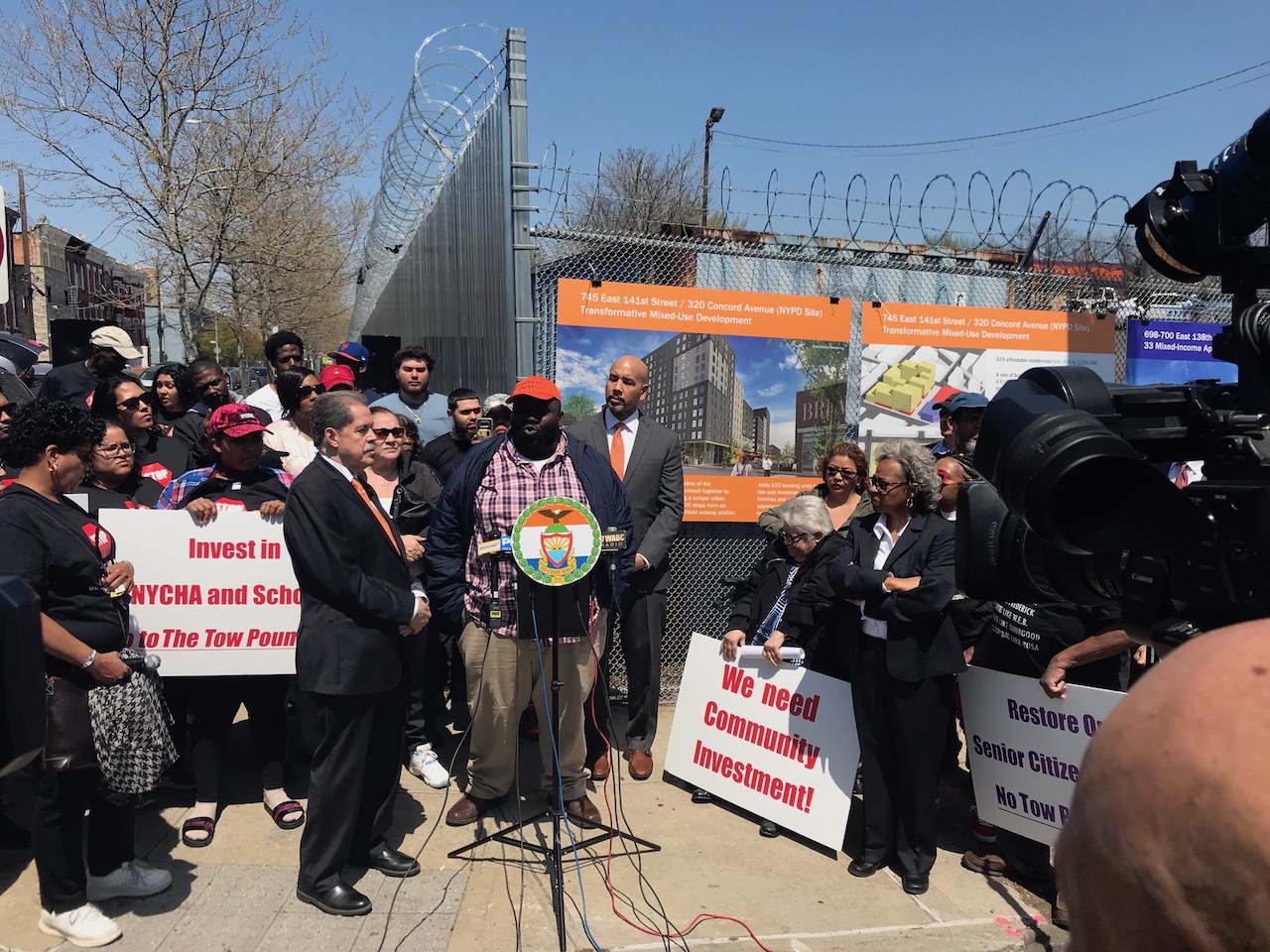
Two of Mott Haven’s favorite sons urged Mayor Bill de Blasio to back off from his plan to build a jail on the site of an NYPD tow pound next to the Bruckner Expressway, at a rally on Tuesday.
Rep. Jose E. Serrano and Bronx Borough President Ruben Diaz Jr. recalled their boyhoods growing up in the neighborhood, while assuring a hundred-some protesters that they are on residents’ side in their clash with the city over a new jail. Arline Parks, Vice Chair and CEO at Diego Beekman Mutual Housing Association, introduced the elected officials to the crowd in front of the pound’s corrugated steel fence at the corner of East 141st Street and Concord Avenue. Beekman Houses, which two years ago introduced an elaborate plan to convert the site into affordable housing and retail space, argues that a new jail would be a devastating step backwards for an area slowly emerging from years of poverty and crime.
“We need transformational investment,” instead of a jail, Parks said, and added that residents’ rejection of a jail is “in no way a rejection of the people who are caught up in the system,” but a demand for needed housing and commerce.
Diaz Jr. echoed Parks’ assertion that although Rikers Island must be closed and inmates moved to more humane and modern facilities, a jail in Mott Haven is a bad idea.
“This is not the site,” said Diaz Jr. When the city announced the plan, he said, “they did so without the consultation of the people of the Bronx.”
Diaz Jr., who organized the afternoon rally, reminisced about his teenage years growing up on Jackson Avenue during the early 1990s, when crime rates were astronomical. The fact that violent crime has tumbled ever since, he said, is a reflection of the lengths local advocates such as Diego Beekman have taken to clean up the neighborhood. The city’s plan “puts all of that at risk” he cautioned, and pointed to the tow pound fence behind him, where a poster of Beekman Houses’ plan for developing the site hung.
“I wholeheartedly support this plan,” he said. “Mr. Mayor, this what New York City looks like. And you better start listening.”
Rep. Serrano, who grew up on East 136th Street and St. Ann’s Avenue during the 1950s after moving from Puerto Rico with his family, urged the mayor to “rethink this. We want Diego Beekman to keep growing.”
Andrew Jackson Houses’ tenant leader Danny Barber, who is also president of the Citywide Council of Presidents, which advocates for all of the city’s NYCHA tenants, told the gathering that he would help organize his sizable constituency of public housing residents to vote against any elected officials who supports the jail.
“We’re tired of accepting the status quo and business as usual,” said Barber. “No more business as usual.”
Opponents contend that, along with negatively affecting property values and economic opportunities, a new jail would mean that some detainees would be likely to stay around after their release and negatively influence impressionable young people.
The city plans to shut down the jail on Rikers Island in the coming years, and move inmates to smaller jails in their home boroughs. In February, the mayor announced that Brooklyn, Queens and Manhattan will all get new jails built on the site of existing detention facilities. The Bronx is the only borough that will get a new jail from the ground up.

